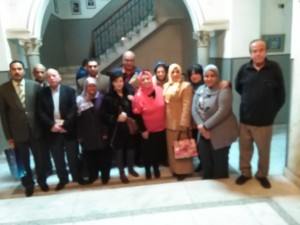Languages are living entities that grow, interact, adapt to new environments, and evolve, giving rise to new words, dialects, and even entirely new linguistic forms. This transformation is not random but shaped by various influences that guide how languages develop over time. What drives these changes, and how do they continue to shape the way we communicate today?
Geographical Distance and Separation
Geographical distance and physical barriers such as mountains and rivers play a critical role in the development of new languages and dialects. As communities become isolated, their languages tend to evolve independently, leading to the emergence of dialects that reflect cultural identities. For instance, Australian English has developed its own vocabulary, pronunciation, and grammatical structures, influenced by the enormous distance and historical separation from other English-speaking regions and the country’s diverse landscapes. This isolation has allowed for the incorporation of indigenous words and local slang, resulting in a new language distinct from its British and American counterparts. One such example in vocabulary is the word “barbie,” which in British English means a doll representing a conventionally attractive woman; however, in Australia, it means “barbecue.” Other examples include “arvo” (afternoon), “bikkie” (biscuit [UK], cookie [USA]), “crook” (unwell, ill), “drongo” (idiot), “dunny” (toilet), “fair dinkum” (true, good, genuine), “G’day” (hello, good day), “mozzie” (mosquito), “postie” (postman/postwoman), “Sheila” (woman), “sunnies” (sunglasses) and “tucker” (food).
Migration and Trade
Languages evolve over time, shaped by migration and trade. One example is the Hmong language, which developed after the migration of the Hmong people from China to Southeast Asia and later to countries like the United States following the Vietnam War. As they settled in new regions, their language adapted to incorporate influences from surrounding languages.
Another significant example is the influence of Latin on European languages during the Roman Empire. As Roman merchants and settlers moved across Europe, Latin vocabulary influenced local languages, particularly in areas related to agriculture, infrastructure, and governance. This legacy persists today in languages, including English, with words like “wall” (from Latin “vallum”), "absence" (from “absentia”), and "street" (from “strata”).
A further example is the influence of Arabic on Swahili in East Africa. As Arab merchants interacted with communities along the Indian Ocean coast, Swahili absorbed many Arabic loanwords, especially those related to commerce, religion, and daily life. This linguistic exchange is evident in words like “kitabu” (book), “hakika” (truth), “aibu” (shame/fault), and “samahani” (excuse me), which entered Swahili as a result of centuries of trade.
Conquest and Cultural Influence
Conquest has historically been a powerful catalyst for linguistic change, as it often imposes the language of the conquerors onto the conquered population. One notable instance is the Norman Conquest of England in 1066, which introduced French words into English. Today, around 30% of modern English vocabulary originates from French. Examples include “rendezvous” (meeting), “déjà vu” (already seen), “souvenir” (memory), “fiancé” (engaged man), and “naïve” (innocent/inexperienced).
Additionally, the French invasion of Africa led to the dominance of French, which remains the official language of Senegal instead of Wolof, Serer, and Mandinka; of the Congo instead of Lingala and Kiswahili; and of Burkina Faso instead of Mooré, Diola, and Fulfulde.
Similarly, the Arab conquest of North Africa in the 7th century profoundly impacted Berber dialects, leading to the incorporation of Arabic vocabulary. The success of Arabic influence was partly due to its association with the Quran, as the population embraced the conquerors' religion, Islam. Today, while Berber dialects contain numerous Arabic words, Berber variations—limited to spoken forms—had no influence on Arabic.
Interlingual Influences
Interlingual influences can significantly shape the evolution of languages. One notable example is the interaction between Spanish and Hebrew, which led to the development of Ladino, a Judeo-Spanish language spoken by Sephardic Jews who were expelled from Spain in 1492 and later settled in various parts of the world, including North Africa. In the twentieth century, modern Hebrew was notably influenced by Spanish, incorporating many Spanish words due to cultural exchanges and the immigration of Spanish-speaking Jews to Israel.
Another example of interlingual influence is the emergence of "Miami English," one of the newest evolving linguistic varieties. Miami, Florida, is recognized as one of the most diverse and bilingual cities in the U.S., where only 25% of residents are native English speakers, and the majority communicate in languages such as Spanish. In recent years, locals in Miami have developed a distinctive linguistic style that blends English and Spanish, which has gained recognition as "Miami English."
The Role of Identity and Culture
Identity plays a crucial role in the emergence of new languages or linguistic variations, as groups often adapt language to reflect their unique cultural backgrounds and social identities. One example is Singlish, a colloquial variant of English that developed in Singapore.
English was first introduced to Southeast Asia by British settlers in the late 1700s and later became more prominent in Singapore. While Malay functioned as the region’s lingua franca, the establishment of English-based higher education institutions in the early 1900s elevated English as a language associated with higher social status. Over time, English became a symbol of prestige and a common means of communication among Singapore’s diverse ethnic groups, particularly after the end of British colonial rule.
However, as English usage expanded, local communities began incorporating unique vocabulary, grammar, and pronunciation elements from Malay, Chinese dialects, and Tamil, leading to the emergence of Singlish. This distinct linguistic variant, separate from formal English, became a powerful symbol of national identity and cultural pride.
Language Creation and Revival
Languages do not merely evolve on their own through interaction; they can also be intentionally cultivated in controlled environments to enhance their development and prevent extinction.
In North Africa, the standardization of Berber (Tamazight) languages exemplifies this process. During the 1960s and 1970s, the Berber cultural movement emerged in Morocco, advocating for linguistic and cultural rights despite limited official recognition. By the 1980s, activists intensified efforts to create a unified writing system. In 1995, the Royal Institute of Amazigh Culture (IRCAM) was established to support Berber languages, formally adopting Tifinagh as the standard script. Morocco’s 2011 constitutional reforms further solidified Tamazight as an official language. Algeria followed suit, recognizing Tamazight as a national language in 2002 and granting it official status in 2016.
A similar example of language revival is Hebrew, which transitioned from a primarily liturgical and scholarly language to a modern spoken one in the late 19th and early 20th centuries, largely due to the efforts of Eliezer Ben-Yehuda. Born in 1858, Ben-Yehuda moved to Palestine in 1881 with the goal of making Hebrew the common language of Jewish people, fostering cultural unity among diverse linguistic groups. He established one of the first Hebrew-speaking schools in the early 1880s and published the first volume of a comprehensive Hebrew dictionary in 1910, significantly enriching the language’s modern vocabulary.
In conclusion, the evolution of language is a complex interplay of geography, identity, history, and cultural exchange. As communities interact, migrate, and adapt to their environments, languages absorb influences that drive their transformation. From the emergence of linguistic variations shaped by geographical isolation to the rich effects of interlingual influences and the deliberate efforts to revive and standardize languages, each factor contributes to the transformation our languages undergo. Understanding these influences not only deepens our appreciation of languages but also highlights their profound connection to the human experience, reflecting our shared histories and identities.




